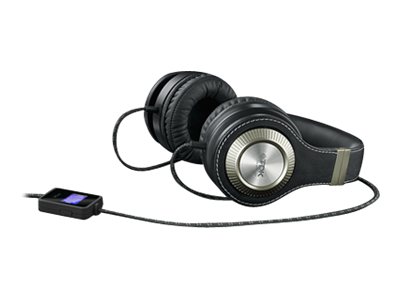The sound quality can be affected by many factors. When it comes to frequency range, the wider it is, the more detail you will hear when listening. However, the range a person can perceive is highly individual. The average person is able to perceive frequencies in the range of 16 to 20 000 Hz. So the most common frequency range you will see on the market is 20 to 20,000 Hz. Lower frequencies up to approximately 256 Hz are considered bass frequencies. Therefore, the lower the bottom value is, the better the headphones will reproduce bass. Conversely, values from approximately 2 048 Hz upwards are treble. That is why headphones with a high upper value will provide a much more accurate reproduction of high notes. TDK ST 800 offers a frequency range of 20 - 20000 Hz. The sensitivity parameter determines how sensitively the headphones can receive the signal from the source. The higher the sensitivity value, the louder the headphones will be able to play with less power consumption. In general, a higher listening volume also means a higher power load for the connected device. So if you're buying headphones to listen to music from your mobile phone, for example, this is relevant to think about as you don't want to drain your phone's battery too much. Lower values around 85 dB are more suitable for listening in more quiet environments (for example, at home or in the office). Medium values of around 90 dB can provide good listening quality in noisier environments (for example, on public transport or in cafés). Headphones with high sensitivity values of around 100 dB or more are designed for really noisy environments, such as concerts. The TDK ST 800 has 104 dB. To control the optimum playback volume you can use the manual control directly on the cable.
An important part of these headphones is the diaphragm, which, simply put, converts the electrical signal into a sound. The thin diaphragm that is around 6 mm thick can react quickly to changes in the audio signal and improves high-frequency listening. However, it is less sensitive to bass. The medium-thick diaphragm of around 10 mm provides a fairly balanced sound profile, allowing you to enjoy both bass and treble. A thicker diaphragm of around 20 mm cannot react so quickly to changes in the sound signal, thus impairing bass listening. However, it is more sensitive to higher frequencies. This model features the 50 mm.
Show more
